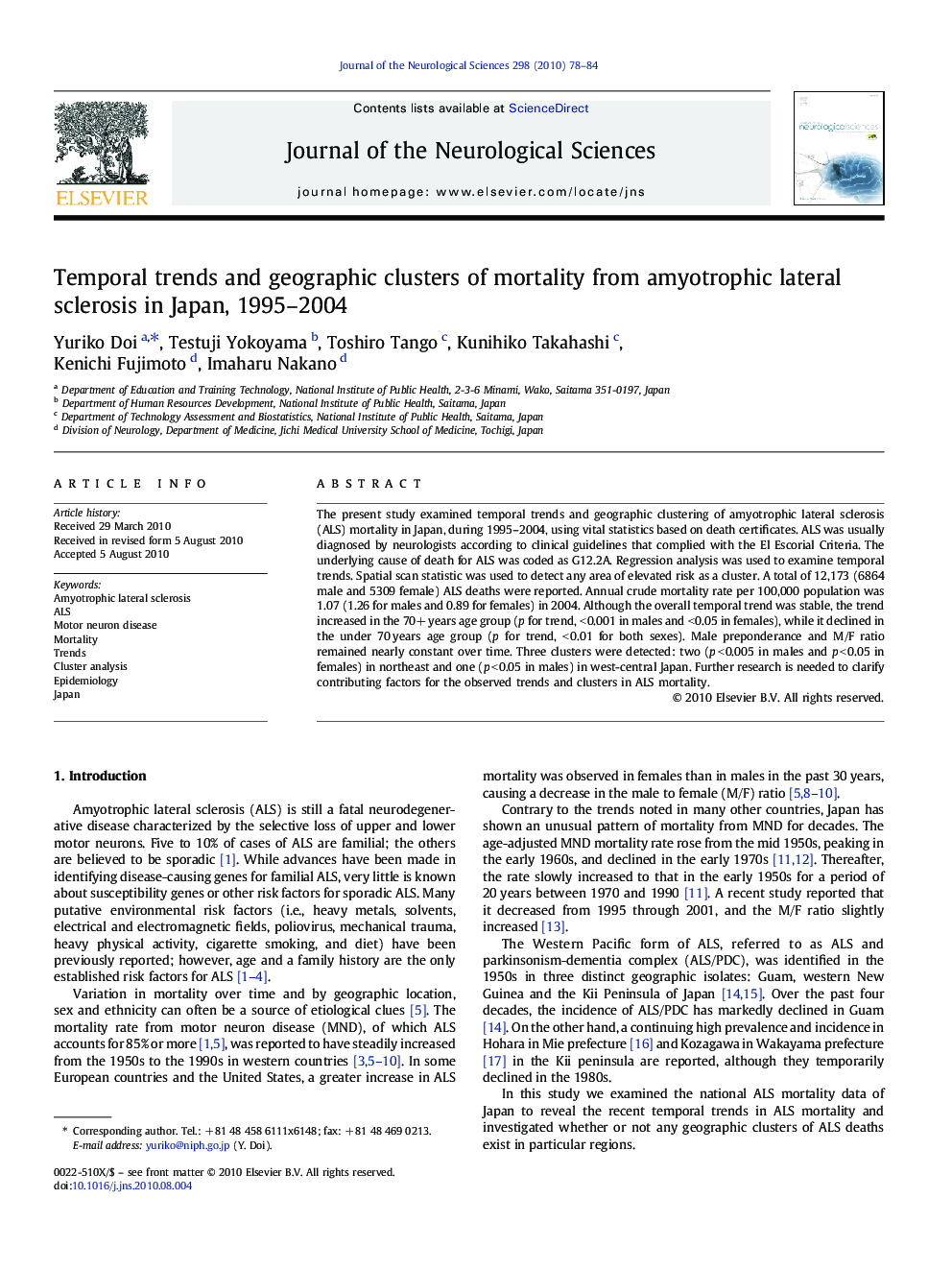| Article ID | Journal | Published Year | Pages | File Type |
|---|---|---|---|---|
| 1914524 | Journal of the Neurological Sciences | 2010 | 7 Pages |
The present study examined temporal trends and geographic clustering of amyotrophic lateral sclerosis (ALS) mortality in Japan, during 1995–2004, using vital statistics based on death certificates. ALS was usually diagnosed by neurologists according to clinical guidelines that complied with the El Escorial Criteria. The underlying cause of death for ALS was coded as G12.2A. Regression analysis was used to examine temporal trends. Spatial scan statistic was used to detect any area of elevated risk as a cluster. A total of 12,173 (6864 male and 5309 female) ALS deaths were reported. Annual crude mortality rate per 100,000 population was 1.07 (1.26 for males and 0.89 for females) in 2004. Although the overall temporal trend was stable, the trend increased in the 70+ years age group (p for trend, < 0.001 in males and < 0.05 in females), while it declined in the under 70 years age group (p for trend, < 0.01 for both sexes). Male preponderance and M/F ratio remained nearly constant over time. Three clusters were detected: two (p < 0.005 in males and p < 0.05 in females) in northeast and one (p < 0.05 in males) in west-central Japan. Further research is needed to clarify contributing factors for the observed trends and clusters in ALS mortality.
